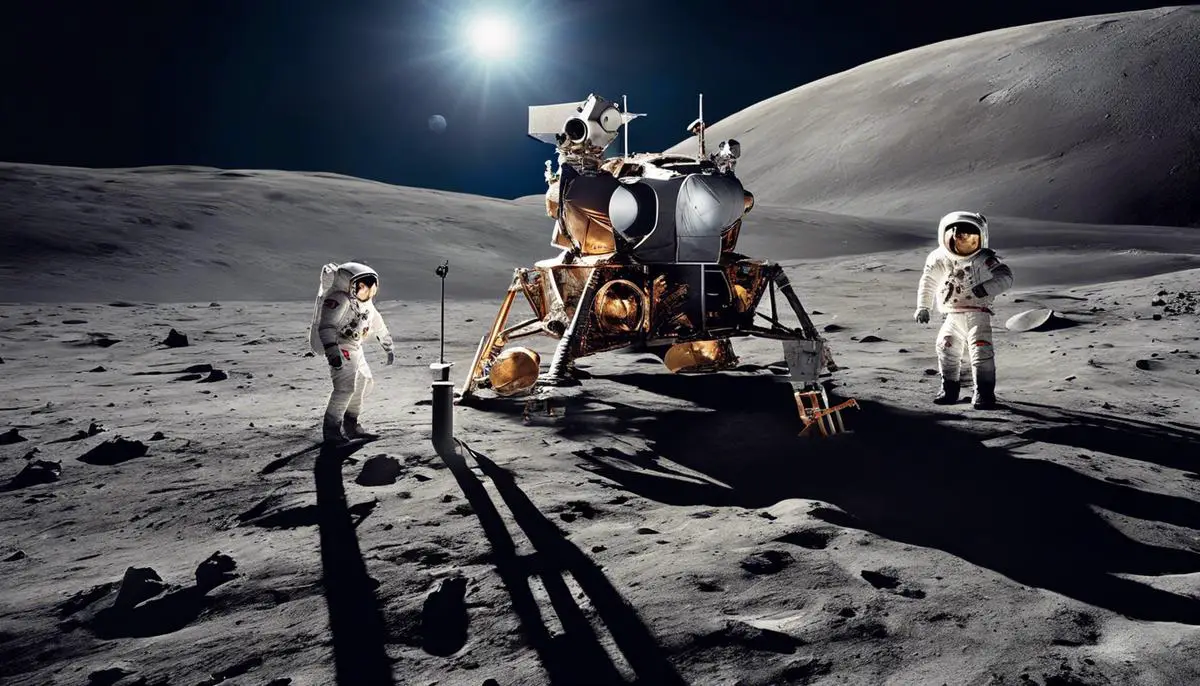As we cast our gaze skyward, the moon has perennially captivated the human imagination, serving as an emblem of aspiration, curiosity and technical accomplishment. Central to this fascination has been NASA’s Apollo program that rightfully takes its place in history for vaulting humanity onto the very surface of our celestial neighbor. Within the ambit of this narrative, we delve into the rich legacy bequeathed by the Apollo missions. Our exploration will crisscross the corridors of NASA’s innovative progression, technological mastery and scientific discoveries, illuminating the profound influence these lunar missions have had on the trajectory of human inquiry and the development of technology.
Contents
The Legacy of Apollo
The Enduring Impact of the Apollo Program on NASA’s Subsequent Endeavors
The Apollo program, NASA’s iconic lunar expedition campaign that was active from 1961 to 1972, stands as a watershed moment in the annals of human exploration. More than just a demonstration of human ingenuity, the Apollo missions ushered in advancements across diverse fields, shaping NASA’s subsequent endeavors and leaving an indelible impact on science and technology.
One cannot overlook the Apollo’s significant influence on the development of technological resources. NASA’s objective to land a human on the moon and ensure a safe return necessitated a myriad technological innovations. The Apollo Guidance Computer, a compact, lightweight digital computer, marked an essential step in computer miniaturization. This trend has been central to all NASA’s space missions since then, culminating in the sophisticated computers onboard spacecraft like the Mars rovers.
In solving the challenges of crewed space exploration, the Apollo program also led to groundbreaking advancements in life support, communication, and safety systems. The refinement of these systems continued post-Apollo, playing a significant role in various programs, including the space shuttle missions and the International Space Station’s operational design.
The Apollo missions also revolutionized the field of astrogeology. The lunar rock samples returned by the Apollo astronauts are seminal in understanding the moon’s geology and its formation. This comprehensive understanding has subsequently informed studies of other celestial bodies, advancing comparative planetary science.
Given the magnitude of the Apollo program’s undertaking, NASA had to assemble large-scale administrative processes and project management strategies. These proved instrumental in directing subsequent large-scale NASA projects, such as the space shuttle program and Mars exploration missions.
Moreover, the Apollo program also reshaped public perceptions of space exploration. The lunar landing became emblematic of human achievement, triggering a sense of wonder and curiosity about the cosmos that continues to fuel public fascination and support for NASA’s subsequent endeavors.
Despite terminating almost half a century ago, the splendor of the Apollo program far from wanes. Its profound effects permeate various aspects of space exploration today. By virtue of setting a precedent for grandeur, scientific rigor, and pioneering spirit, the Apollo program has left an enduring legacy that continues to mold NASA’s ongoing pursuits and aspirations.
The story of Apollo is, no doubt, a narrative of epoch-making achievements. It is a journey that instills strength in NASA’s endeavors and continues to inspire generations to look up and wander, kindling a never-ending quest for probing the mysteries of the cosmos.
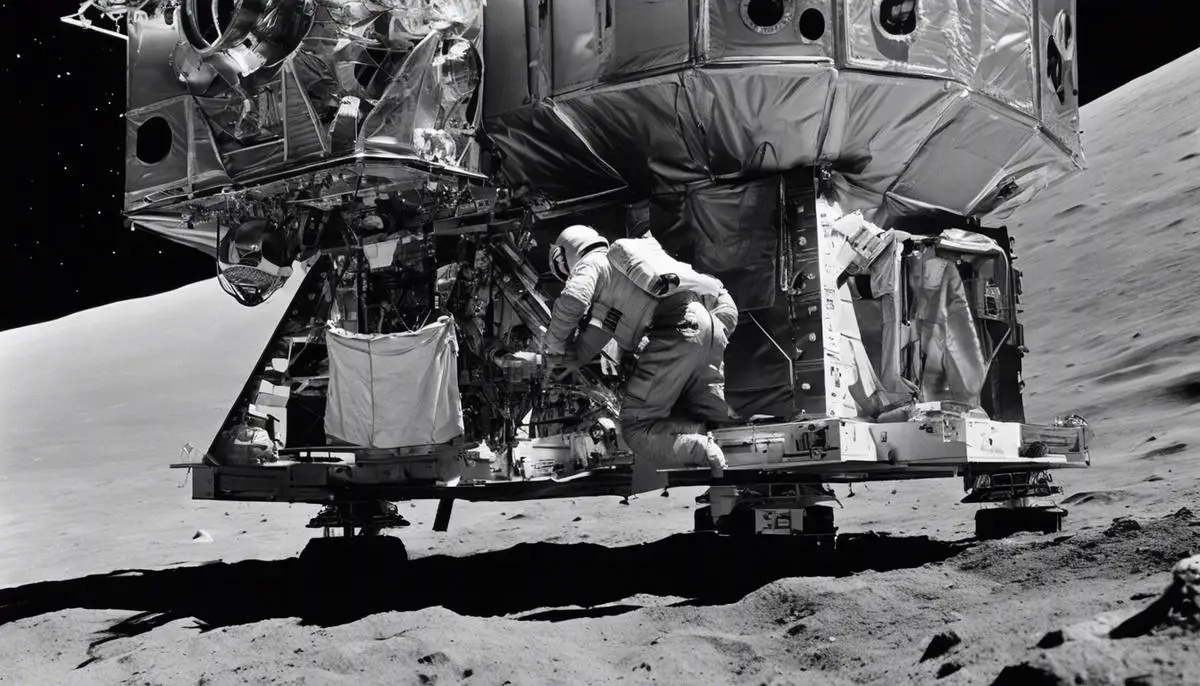
Evolution of Mission Aims
The Progression of NASA’s Lunar Mission Objectives: A Comprehensive Examination
While NASA’s moon missions are universally lauded for their technological advancements and life-support systems, the focus of the endeavor has shifted stealthily yet decisively over the years. The Apollo missions (1969-1972) marked a pioneering chapter in human history. The primary objective was choate: to land humans safely on the moon, which was met with unprecedented success with the Apollo 11 landing in 1969. But it was more than a mere moon landing; it was the ignition of a quest that would span decades.
The Gemini Program preceding Apollo had been the first iteration of these lofty goals, putting two men into orbit simultaneously with the intention of developing space travel techniques for future lunar missions. The Apollo mission that followed had its foundation in this ambitious project, expanding upon its objectives to include lunar reconnaissance, development of essential technology for crewed spaceflight, and enabling humans to perform sustainable workloads on the moon’s surface.
These objectives were ambitious, but they nonetheless were achieved with triumph. Yet, the scope of the subsequent Apollo missions (Apollo 12, 14, 15, 16, 17) evolved significantly. The focus shifted from mere survival and accomplishment of the moon landing to comprehensive lunar explorations. They aimed to establish more prolonged lunar surface operations, collect scientifically invaluable lunar samples and launch them back to Earth, and perform experimentations on the moon’s surface.
However, the curtains of the Apollo Program wouldn’t fall without leaving its trace etched permanently in the pages of history and science. The wealth of lunar samples retrieved and the invaluable data collected by the Apollo missions significantly contributed to astrogeology, catapulting it to a whole new level of recognition and effectiveness.
Post-Apollo, an interlude of lunar mission hiatus lingered until the new millennium when NASA’s Lunar Reconnaissance Orbiter (LRO) was launched in 2009. The LRO was designed with a novel mission objective: to map the moon’s surface meticulously. This mission has played a pivotal role in identifying ideal regions of interest for future human exploration and locating potential resources with a level of detail not seen earlier.
Following the LRO, in 2011 NASA embarked on the Gravity Recovery and Interior Laboratory (GRAIL) mission. Maintaining a seismic shift in mission objectives, GRAIL strived to study the moon’s interior to better understand its thermal evolution – a departure from mere lunar surface exploration.
Today, the Artemis program stands testament to the evolution of moon mission objectives over time. Artemis seeks to not just return humans to the moon, but to build a sustainable presence there. This shift represents a transformational leap in space exploration – moving from one-off demonstrations of capability, to a lasting, human presence in that celestial black.
The power of space exploration has fundamentally shifted over the decades—from a feat of human ingenuity to a robust platform for scientific discovery and technological advancement. This evolution in goal-setting is not strictly a tale of mission accretion; instead, it tells a far larger story: the maturing understanding that our very future may lie in the cosmos. Our objectives, then as now, remain as bright as the moon on a clear night—driving us to venture further into that vast, cosmic ocean.
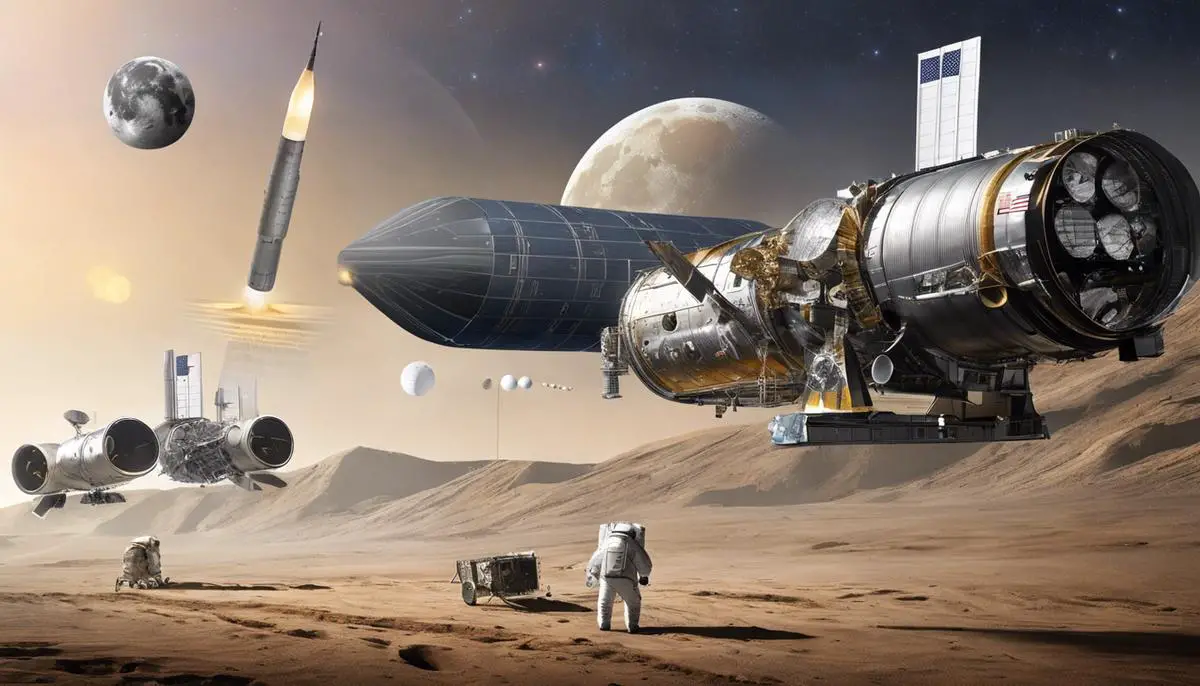
The technology behind the Last Moon Mission
One of the remarkable developments that were applicable in NASA’s last lunar expedition, Apollo 17, is the further refinement of the Lunar Roving Vehicle (LRV).
Launched on December 7, 1972, from Kennedy Space Center, Apollo 17 marked an evolution in lunar surface exploration as LRV, also famously known as the “moon buggy”, allowed astronauts to reach farther areas of the lunar surface.
This electric-powered vehicle was first introduced in Apollo 15 and carried over to Apollo 16 and 17.
The LRV in the final mission was imbued with several technological enhancements such as the front and rear steering capability for redundancy and improvements in the suspension system.
This elicited unprecedented geologic observations and experiments in previously unreachable lunar terrains.
In terms of lunar surface science equipment, the Apollo Lunar Surface Experiments Package (ALSEP) was notably advanced.
Apollo 17 was equipped with the Surface Electrical Properties (SEP) experiment.
The SEP used an antenna – deployed by the astronauts – to propagate an electromagnetic signal.
It examined subsurface geology including the depth of the underlying rock layer and the electrical properties of the moon’s surface material.
Growing reliance on computers represented one of the most critical technological progressions in this final lunar mission.
The Apollo Guidance Computer (AGC) was one of the first to use integrated circuits.
A lynchpin of the mission’s success, the AGC was responsible for in-flight control and the astronauts’ safe return to Earth.
The complexity of this task cannot be overstated, underlining the invaluable significance of this technology in the mission’s triumph.
Photographic technology evolution contributed significantly to the mission’s success.
The Apollo 17 crew was equipped with a Hasselblad Electric Camera which allowed for detailed color photography.
This was notably beneficial in recording geological features and activities.
An automatic 70mm lunar surface camera installed in the lunar module provided high-resolution surface images before, during, and after the lunar module landing and lift-off.
This enabled vast steps forward in lunar topography documentation and analysis.
Finally, the Ground-Commanded Television Assembly captured live broadcasts from the moon, making Apollo 17 a watershed moment in marrying technology with public engagement.
It allowed millions of viewers to vicariously become a part of mankind’s lunar explorations.
The technological strides illustrated in NASA’s final lunar mission emboldened the explorations and innovations of tomorrow.
These advancements hailed a new era, laying a solid foundation for future missions to the moon, and beyond, in a space-faring legacy that persists today.
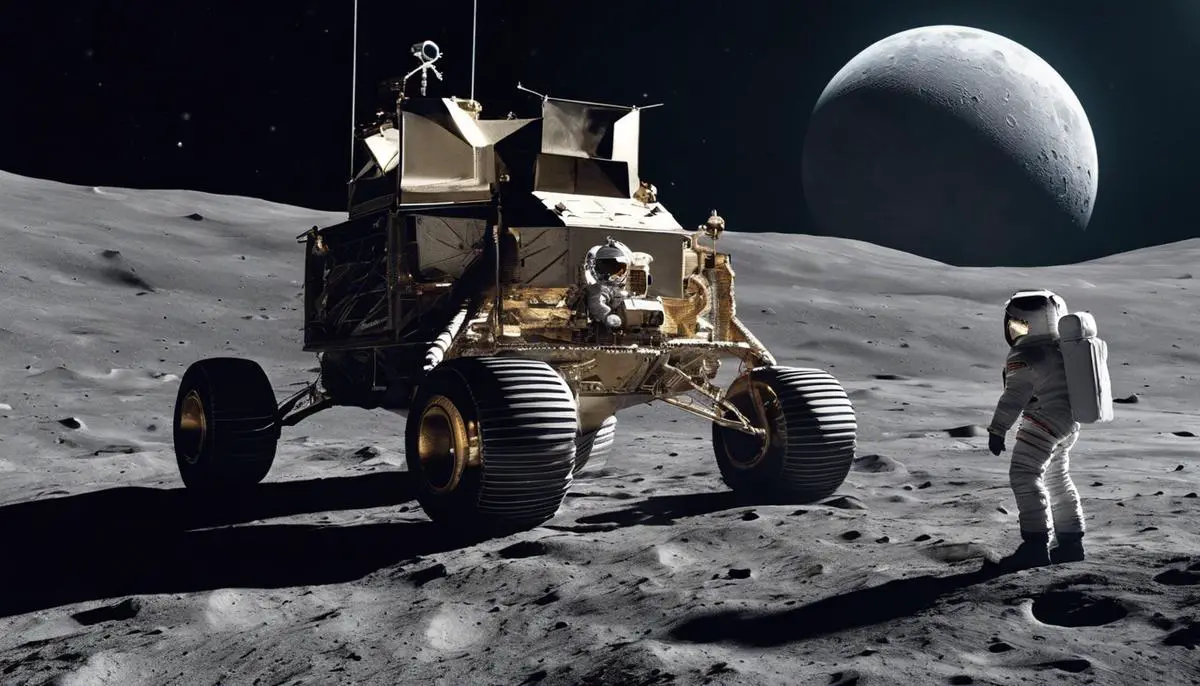
Scientific Discoveries
Despite the multifarious achievements within the sphere of space technology during NASA’s last lunar mission, Apollo 17, strikingly salient scientific discoveries were also made – often perceptibly pivoted around lunar geology – that deeply broadened our understanding of the moon.
Notably, one of the key breakthroughs entailed the discovery of minute amounts of water in moon rocks. An exposure of lunar rock dubbed the “Tracy’s Rock,” sampled by astronaut Eugene Cernan revealed the water trapped within its crystal structure. This revelation laid foundations for the contemporary hypothesis proposing the existence of ice within the lunar poles’ permanently shadowed regions, consequently spiraling into intriguing implications about the moon’s potential to harbor life.
The discovery and analysis of moon rocks during Apollo 17 fostered significant development in our understanding of the moon’s origin. The mission brought back a unique rock known as the “orange soil.” Upon analysis, scientists found that it contained tiny beads of volcanic glass, evidence of volcanic activity on the moon 3.5 billion years ago. This study enabled researchers to surmise that the moon possesses a differentiated structure similar to earth, with a crust, mantle, and core.
Apollo 17 made striking revelations about the moon’s geological diversity. As astronaut Harrison Schmitt, a trained geologist, conducted field studies on Taurus-Littrow valley, the findings uncovered clues of the existence of different rock types and landscapes. The collected samples helped researchers understand volcanism on the moon, concluding that the moon was geologically active for a lengthier period than previously postulated.
A groundbreaking advancement was the successful usage of lunar-based gravimetry. Through gravimetric data from Apollo 17, studies affirmed the moon’s mascons (mass concentrations). These are large, circular areas exhibiting enhanced gravitational force. Knowledge of mascons reshaped our understanding of the moon’s internal composition and structure, contributing heavily to lunar geophysics.
Finally, one should not overlook the strides made on the moon’s magnetic field. The mission carried the Lunar Surface Magnetometer, which discovered weak but existent remnants of lunar magnetism. This surprising find indicated that the moon once possessed an active magnetic core, forcing scientists to rethink the moon’s internal structure dynamics.
In essence, NASA’s final moon mission, Apollo 17, served as an important conduit in space exploration research which furnished crucial scientific lore concerning the moon’s geological past, composition, and environment. These findings continually guide our moon exploration strategies, in the bid to uncover the mysteries that the universe harbors.
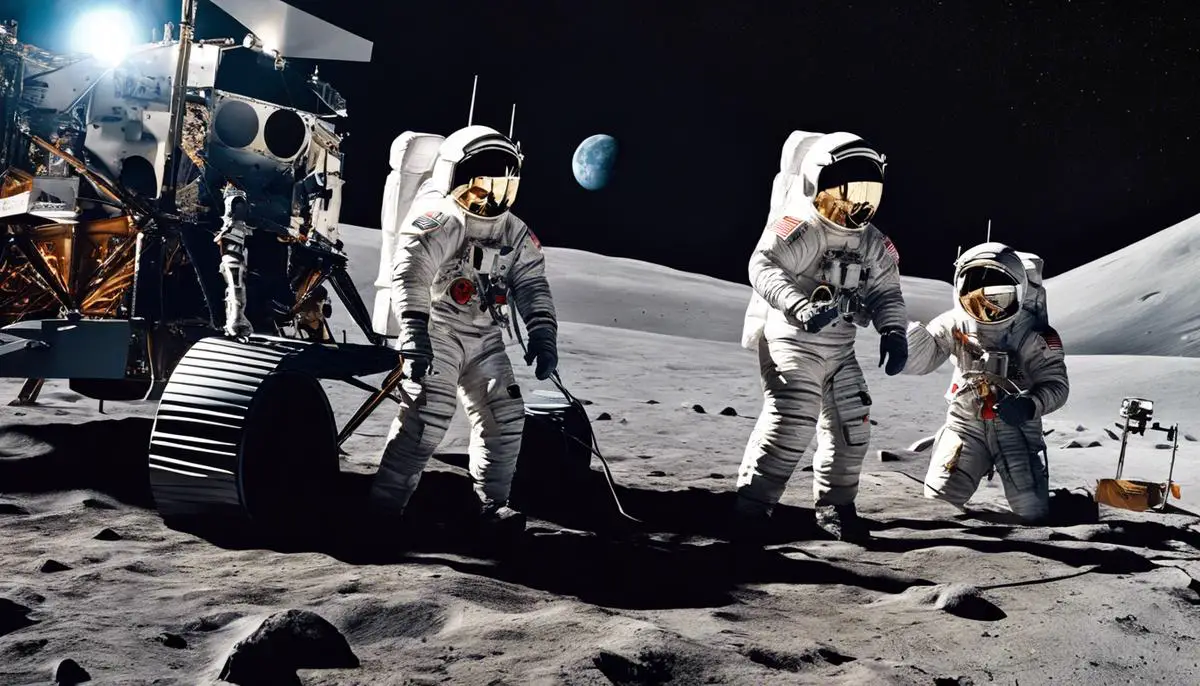
The Future of Lunar Exploration
Forecasting the next wave of lunar endeavors, the future of space exploration is an intimate blend of the human factor and automation. Resources discovered and lessons learned from past lunar missions suggest a ripening landscape of possibilities for exploration and sustained lunar habitation.
Based on the notion that the moon’s north and south pole feature colossal amounts of ice, space agencies worldwide envision harnessing this potential source of water for both life support and rocket fuel. Further, the discovery of water in lunar rocks and the differentiation in moon’s structure posits profound insights into the origin and evolution of the Solar system.
The moon’s polar regions, in particular, house permanently shadowed regions known as cold traps. These areas assume a surreal significance, suspected to contain frozen water and other volatiles that offer a window into the solar system’s history. This underlines the guiding goal of the upcoming Volatiles Investigating Polar Exploration Rover (VIPER) mission. Its mandate will be to locate and analyze these resources, crucial for in-situ resource utilization (ISRU), thereby establishing infrastructure for sustainable lunar exploration.
The Artemis program categorically specifies an incremental approach, turning from the erstwhile strategy of quick sortie missions. Artemis I, slated for an uncrewed test flight in 2022, demonstrates every promise to further our understanding of our satellite’s past and composition. Artemis II is projected to execute a crewed fly-by of the moon in 2023, with Artemis III intended to land astronauts, including the first woman and the next man, on the moon by 2024. Integrating the services of private industry in designing mechanically enhanced spacesuits, habitation modules, and landers promises a visionary ground-up blueprint for future expeditions.
Astrobotany, by introducing lunar agricultural techniques, is a revolutionary spark of interest. NASA’s Vegetable Production System, colloquially known as ‘Veggie’, has already celebrated six years of successful growth of red romaine lettuces aboard the ISS.
Furthermore, Apollo 17 verified the existence of lunar magnetism and revealed the geological diversity of the moon, including different rock types, landscapes, and evidence of volcanic activity. This opens a potential avenue for exploring lunar lava tubes that could shield astronauts from harmful cosmic and solar radiation, hence serving as possible habitats for lingering lunar visits.
Mascons – mass concentrations beneath the lunar surface inferred by lunar-based gravimetry during Apollo 16 & 17 – suggest the prospects of hidden lunar metallic ore reserves. While it may sound ambitious, in-situ manufacture of hardware from lunar resources, or lunar industrialization, could eventuate into actuality.
To sum up the potentiality of lunar and space exploration, it is an amalgamation of deep-space human exploration, scientific discovery embodied by the Next-Generation Lunar Scientists and Engineers, and technology advancement pitched by the Lunar Surface Innovation Consortium. The future of lunar and space exploration is neural reticulation – not isolated milestones, but a gradual, inexorably interconnected expanse of objectives, each supporting and directing the next.
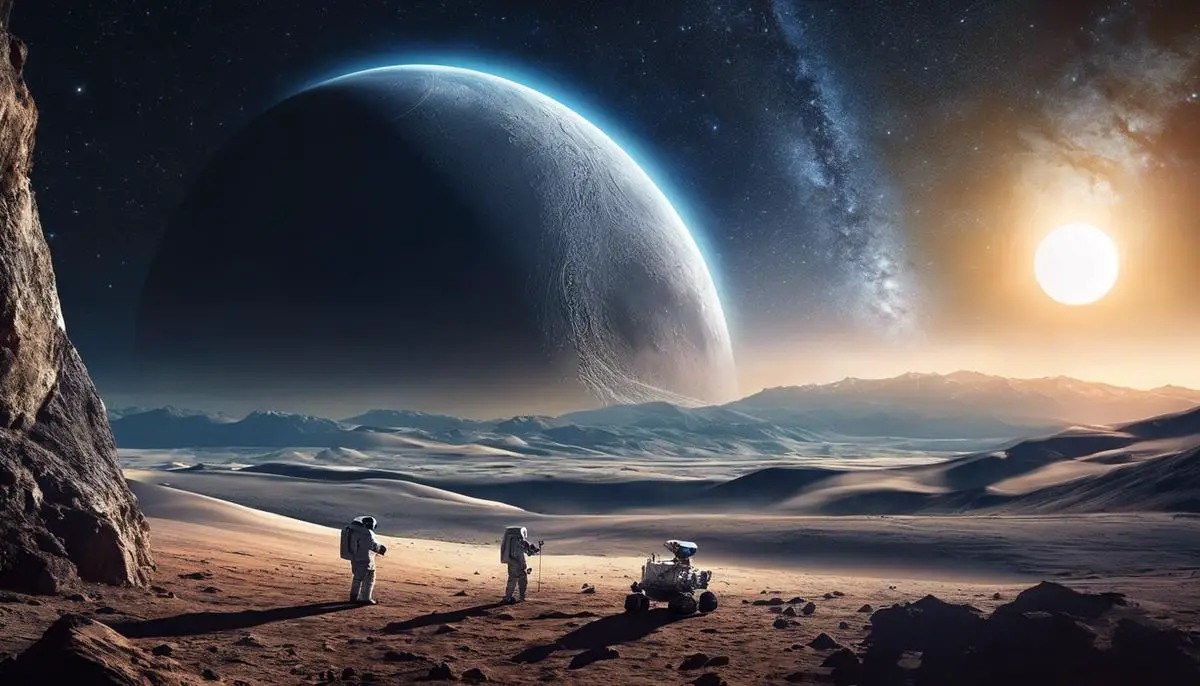
The footprints left by the astronauts of the last moon mission remain seared into the lunar dust, a poignant testament to their pioneering spirit. As we reflect on their triumphs and challenges, we inevitably contemplate the future. These thought-provoking lunar exploits have provided invaluable insights that push the boundaries of our scientific understanding and fortify our technological prowess. With a world ever eager to conquer new frontiers, the last moon mission not only prompts us to ponder the robust potential of future lunar exploration but also serves as a touching reminder that our quest for knowledge, driven by resilience and audacity, is indeed boundless.
